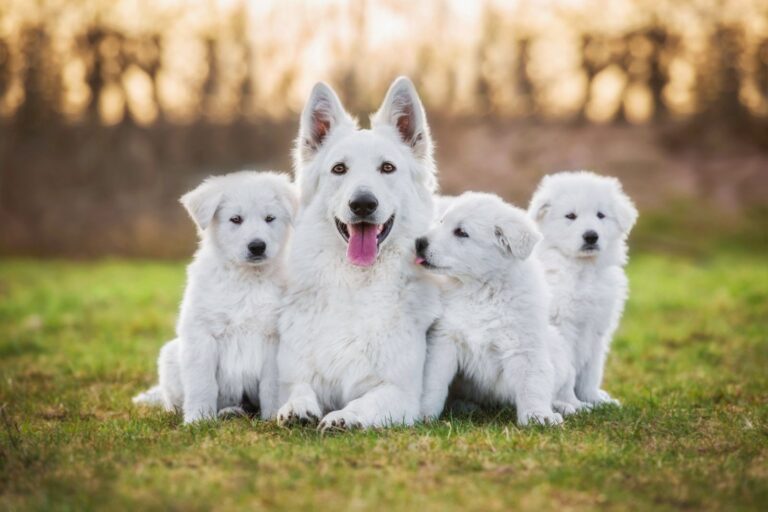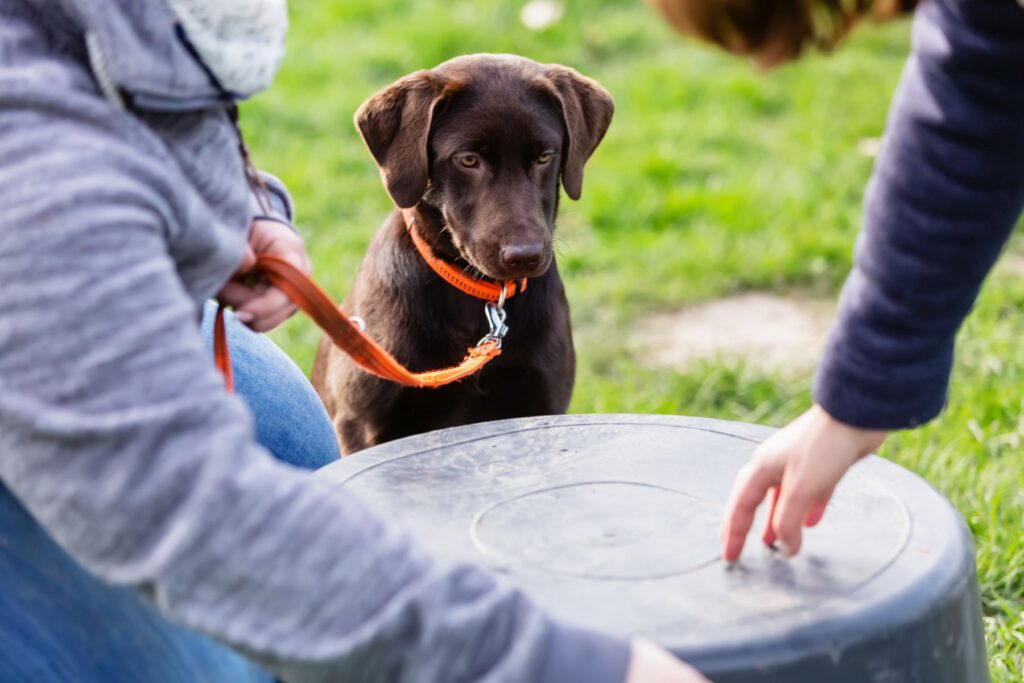Development of Puppies: From Birth to Adulthood
Every puppy goes through several developmental phases until it eventually grows into an adult dog. Learn more what is crucial for the development of puppies into self-assured and serene dogs.
Every puppy goes through several developmental phases until it eventually grows into an adult dog. Learn more what is crucial for the development of puppies into self-assured and serene dogs.

© Rita Kochmarjova / stock.adobe.com
A puppy's development phases begin early with the mother.
In this article, we will introduce you to the various stages of development. One crucial aspect revolves around the role of the mother dog and breeder. However, once your puppy enters your home, the responsibility falls on you to assist its progress.
This phase commences with the birth of the puppies and spans the first two weeks of their lives. During this stage, puppies are born without sight and hearing. Hunger and cold are the predominant sensations experienced during this early period.
Typically, puppies spend most of their time sleeping or seeking nourishment and warmth from their mother. When seeking these, puppies move their heads back and forth and make circular motions to prevent straying too far from the nest.
Initial learning occurs during this period. Puppies must actively respond to hunger or cold and are rewarded with success, food consumption, or physical contact. It is crucial not to deprive them of this valuable experience by providing excessive assistance. Mild stress promotes the development of emotional stability.
Puppies should be watched over but not overly protected during this developmental phase.
 © cinana / stock.adobe.com
© cinana / stock.adobe.com
The third week of a puppy’s life marks the transition phase. It is during this time that their eyes and auditory canals open, and their milk teeth begin to emerge. However, their vision fully develops around the 17th or 18th day. The heightened sensory input leads to puppies starting to react to their siblings, humans, and their surroundings.
There is an increase in activity, even though they still spend a significant amount of time sleeping. Muscle development initiates, and coordination improves as they engage in more movements, such as crawling backwards.
During this phase of puppy development, the first socialization occurs as they interact with their littermates. The breeder can encourage and focus their adaptation to humans by regularly stroking their entire body.
The socialization phase is the most critical stage in a young dog’s development. Depending on the breed, this phase can last from the fourth to the sixteenth week.
This initial sensitive phase is formative and vital for learning. All positive experiences with environmental stimuli (both inanimate and living, including other animals) during this phase can be stored in the puppy’s memory as normal. This sense of security helps the dog approach new situations or stimuli with confidence.
As puppies become more cautious of new things from around seven weeks onwards, it is crucial for them to have as many diverse experiences as possible between the third and fifth week. Curiosity prevails during this phase, and learning occurs without the need for specific rewards. It means that early training sessions can be approached in a playful manner.
Your puppy usually joins your home at around eight weeks of age. However, the socialization phase is far from complete at this stage. It becomes your responsible task to gently introduce your puppy to its new environment and expose it to as many experiences as possible.
Important note: Puppies should already have gained many positive experiences and impressions while still with the breeder. However, it is essential to continue socialization once they have entered their new home.
The subsequent phase in puppy development is known as the juvenile phase. It begins with the change of teeth and continues until the onset of puberty (heat in females and leg raising in males). The timing of this phase can vary depending on the breed, typically occurring between six to twelve months of age. The changes during this phase are not as drastic as in the previous stages.
The rapid growth experienced during the first months has slowed down, and by the beginning of this phase, puppies have reached approximately two-thirds of their adult size. The focus now shifts towards increased strength and improved motor skills.
Even at this stage of their lives, young dogs require continued training in a playful yet consistent manner. It is important to work on developing basic commands and enhancing their motor skills through progressively longer training sessions. This establishes a solid foundation for a well-trained dog.
During this phase of puppy development, it is normal for a young dog to test boundaries repeatedly. This process allows them to understand and adapt to the social structures in their environment. Loving and consistent leadership is crucial in day-to-day life during this period.
Around four months of age, a second anxiety phase often emerges. Previously familiar environmental influences are suddenly viewed as potentially dangerous. During this phase, it is important to remain relaxed and calm, showing your puppy that it can trust you. Give it the time and space to observe and approach new situations at its own pace, promoting a relaxed and confident response.
 © Christian Müller / stock.adobe.com
© Christian Müller / stock.adobe.com
Young dogs enter the adolescent phase between the ages of six to twelve months, depending on their breed. This phase starts with puberty and continues until around two years of age when they reach maturity.
The initial stage of this phase, also known as the teenage years, can last up to the second year of age, varying based on the breed and individual dog. Similar to human adolescents, young dogs may face challenges in cooperation when their sex hormones become active. Suddenly, a well-trained dog may struggle to follow commands, even ones they previously mastered.
During this period, it is important to remain relaxed yet consistent in your approach. Building on the trust and relationship developed in the earlier months is key. Continue lovingly practicing commands with your young dog.
Maintaining contact with other dogs is crucial during this phase, but it should be done in a calm and controlled manner, avoiding power struggles and conflicts.
The maturity phase typically begins around two years of age, varying based on the breed. It is during this time that breed-specific traits and characteristics become more pronounced and solidified. Various degrees of territorial behavior are common.
Hormone levels stabilize, resulting in more predictable behavior towards other dogs. They become more selective in accepting playmates and may discourage pushy behaviors from others.
During the adult phase, your dog exhibits a mature and stable character along with physical development. It becomes resilient to occasional negative experiences, but consistent behavior and guidance are still necessary from your side. Your dog may occasionally test the existing rules and boundaries.
Generally, larger breeds take longer to reach adulthood compared to smaller breeds.
Every puppy goes through several developmental phases until it eventually grows into an adult dog. Learn more what is crucial for the development of puppies into self-assured and serene dogs.
Some dog lovers are sure that their canine companion understands them perfectly. Nevertheless, there are often misunderstandings between humans and dogs in day-to-day life, because what appears self-explanatory to us isn't always so clear for dogs. What do dogs really understand?
Many dog owners kiss their dogs and cats, so we can only hope that they have brushed their own teeth and their pet's too! But joking aside – cuddling and snuggling with animals isn't just unhygienic in certain cases, but can also be dangerous.